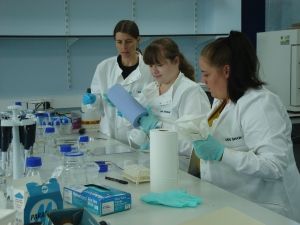Centre for Biodiversity and Biosecurity seminar – all welcome.
Posted by Jacqueline Beggs
Tuesday, 14th April, 12.30pm
Tāmaki Campus, University of Auckland
Building 733-234
Speaker: Dr Manpreet Dhami, Stanford University, USA
 Manpreet Dhami received her Ph.D. in 2012 from the University of Auckland studying the multi-trophic interactions between scale insects, their symbionts and honeydew consumers. She was supervised by Jacqueline Beggs and Mike Taylor. Manpreet discovered and characterized a novel bacterial symbiont associated with endemic New Zealand scale insects (Dhami et al. 2012), and elucidated the cophylogenetic patterns between bacteria and their scale insect hosts (Dhami et al. 2013a). She also documented the diverse fungal community associated with honeydew (Dhami et al. 2013b) and showed that honeydew from each scale insect species had a distinctive amino acid and carbohydrate signature (Dhami et al. 2011).
Manpreet Dhami received her Ph.D. in 2012 from the University of Auckland studying the multi-trophic interactions between scale insects, their symbionts and honeydew consumers. She was supervised by Jacqueline Beggs and Mike Taylor. Manpreet discovered and characterized a novel bacterial symbiont associated with endemic New Zealand scale insects (Dhami et al. 2012), and elucidated the cophylogenetic patterns between bacteria and their scale insect hosts (Dhami et al. 2013a). She also documented the diverse fungal community associated with honeydew (Dhami et al. 2013b) and showed that honeydew from each scale insect species had a distinctive amino acid and carbohydrate signature (Dhami et al. 2011).
Currently she works as a postdoctoral research fellow at Stanford University in Tad Fukami’s lab, where she is developing an ecological genomics approach to assess the mechanisms underlying microbial community assembly.
Talk outline
Next generation sequencing has revolutionised access to genomics to address key ecological questions such as genetic mechanisms of fitness. I present two case studies that integrate genomics and classic ecological approaches.
Case study 1: Sap-feeding scale insects thrive on a nutritionally poor diet of phloem, possibly enabled by the presence of novel obligate symbionts. Such symbionts, however, cannot be cultured in-situ, hindering further study of their function. We sequenced the genome of one symbiont, establishing its nutritional role in the ecological success of this insect.
Case study 2: Floral nectar hosts a complex community of microbes, such as the dominant Floricolous yeast, Metschnikowia reukaufii. We characterised cell and colony morphology, growth rates and sequenced the whole genome for 23 strains of M. reukaufii. This yeast’s high intraspecific phenotypic variation was correlated with genotypic diversity, potentially contributing to its success as a nectar specialist.










